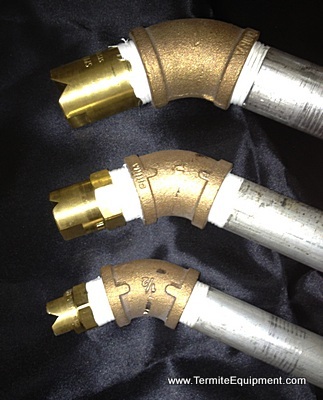Pest Control Sprayer - Spray Tips
Posted by Andrew Greess on Dec 2, 2012
Pest control sprayers rely of spray tips for proper application of pesticides. The correct, well-maintained spray tip in your pest control spray rig gun can contribute to excellent results: both pest control and financial. The wrong tip, or a worn tip, will have the opposite results.

The spray tip is the main determinate of power sprayer output. For example, it doesn’t matter if you have a 20 gpm pump and 1” spray hose when the tip is just 1 gpm.
Tip selection determines: output volume, output pattern and droplet size. Each of these factors impacts the quality of the application and the control efforts that you achieve.
- Output Volume – usually measured in volume per unit of time (e.g., gallons per minute). General home pest control sprayer uses lower rates, termite pretreats use higher rates. Higher output generally suggests faster treatments but higher chemical costs.
- Output Pattern – The most popular pest control patterns are flat fan tip and cone/stream. The cone/stream tip allows a more specific targeting of the pesticides. The flat fan tip generally allows the technician to cover a larger area more quickly.
- Droplet Size – Mosquito fogging uses very small droplet size to create a fog that hangs in the air. Smaller droplets can drift to unintended targets: neighbor’s yards, kid’s toys, pet dishes, etc. Termite pretreats are at the other extreme, using large droplet size so that the water goes and stays exactly where you want it to good.
Two important points about tip selection:
- Start with the right tip. This decision is based upon your application protocol and should be made after considering all the above issues.
- Replace tips regularly. We estimate that brass tips wear out at a rate of approximately 10% per year. This means that every year your tip puts out 10% more chemical. This is an involuntary increase in your chemical costs. If the pattern wears out, you may not be putting the chemical wear you intend. Replacing tips is cheaper than using worn tips. Plastic tips probably wear out faster; stainless steel tips more slowly.
